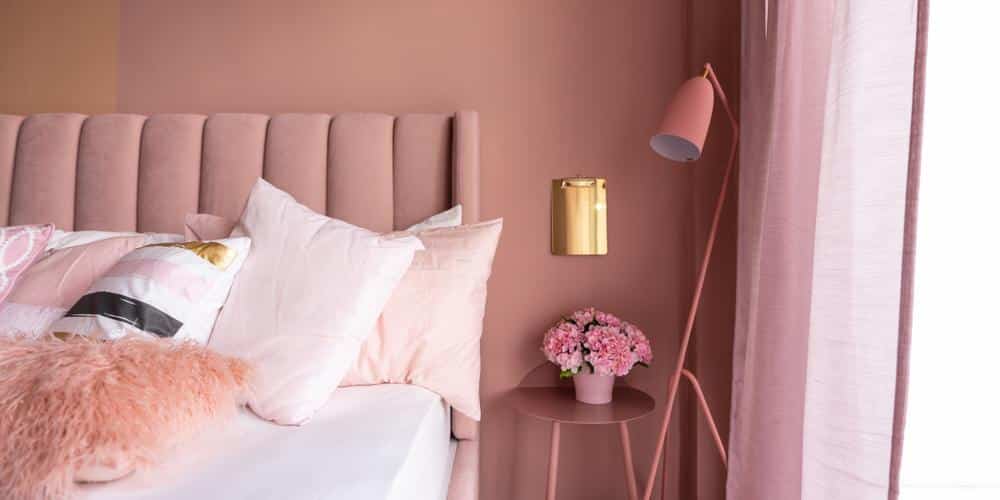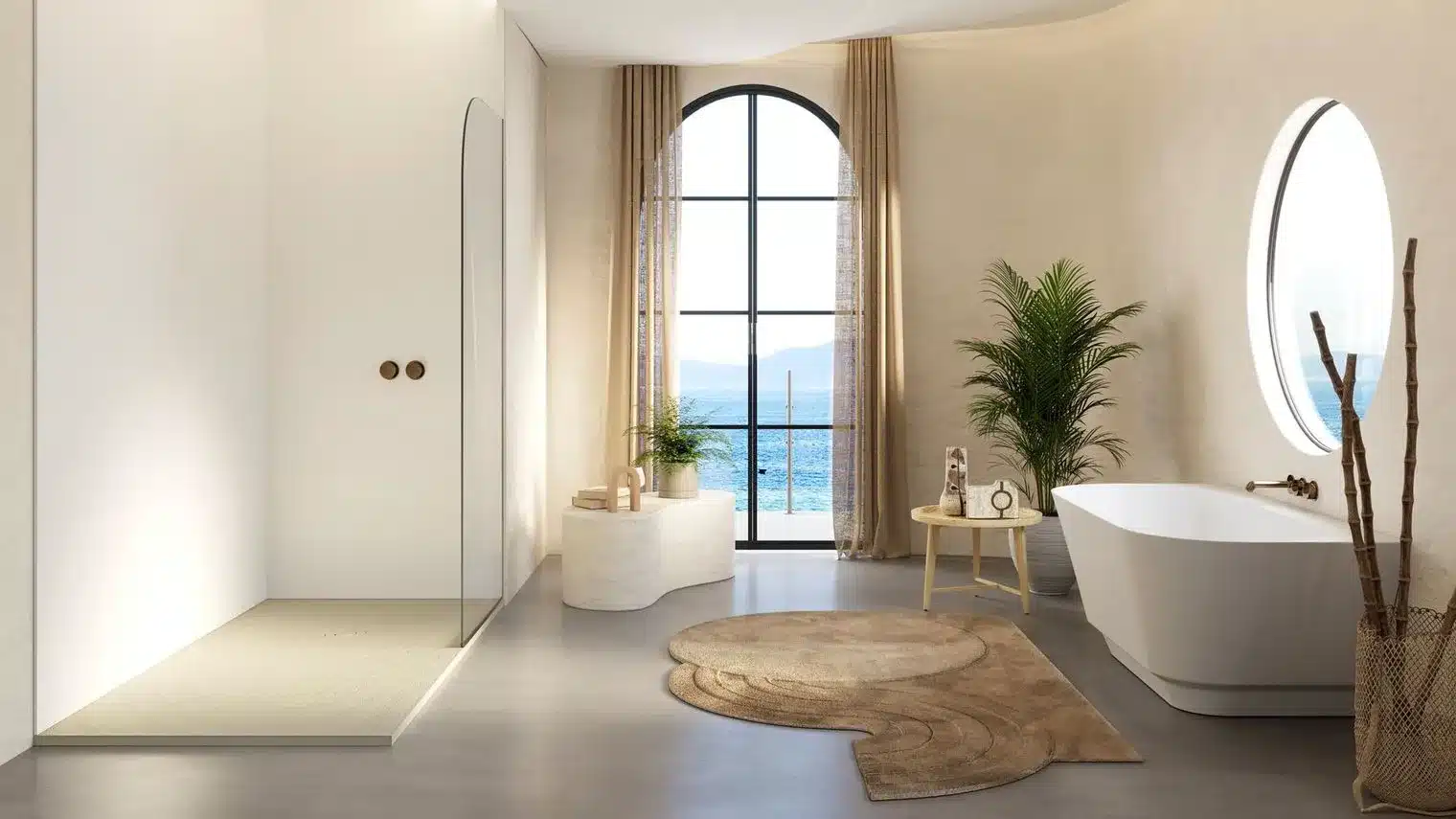Get fresh inspiration for your bedroom from the editorial staff!
You want a new look for your bedroom, but you’re not sure which colors to paint or how they should be paired together? Discover our decor tips and advice without delay!
Briefly summarized:
-
Can you recommend a color palette for a bedroom?
-
An easy way to determine what wall to paint in a bedroom…
-
Trendy colors and paint effects for decorating
-
How do you paint a bedroom in 5 steps?
Are you tired of eggshell yellow or flying saucer wallpaper that has been adorning your walls for too long? While it is easy to hire a professional painter, if you prefer to save some money while enjoying the satisfaction of doing the job yourself, know that painting a room is within everyone’s reach. The first thing you should do before brandishing brushes and rollers is to answer a few questions and inform yourself about some slightly more technical points. Fortunately, deco.fr helps you answer that question in three minutes and with only two brush strokes.
-
How should the color palette of a bedroom be chosen?
-
Here’s a bit of math to help you decide which wall to paint in a bedroom…
-
Tips for decorating with trendy colors and paint effects
-
4. How should a bedroom be painted in practice?
What color palette would you recommend for a bedroom?
In our bedrooms, there is a consensus about the colors to stay away from, far from aesthetic rules, on what is and isn’t beautiful. The quality of our sleep is negatively impacted by bright tones, such as electric blue and fuchsia pink, and exciting colors such as red, orange, and yellow.
Neutral, pastel, and muted tones, as well as greys, whites, beige, blues, and greens are better choices for a bedroom.
It is not possible for color alone to push back walls, but associating colors with one another, by creating guilds, is what makes it possible. When painting a small bedroom or a low-ceilinged bedroom in tones that expand the space visually, it is beneficial.
In order to make a room appear longer, paint one wall a darker color than the other three, and vice versa, paint the back wall a dark color to give volume to a long room. The dark colors do indeed give the impression of being closer to us. To create an impression of elevation, you can paint a room’s ceiling and high woodwork the same color as the walls. As a result, if your walls are white, you have to paint your ceiling the same color or you will achieve the opposite effect. The ceiling must always be lighter than the walls or of equal tone.
If your bedroom has little natural light and is served by a hallway or a small airlock, you might want to play on the contrast between these two rooms to bring light into your bedroom. You can accomplish this by repainting your hallway a darker color. This will immediately make the other rooms adjacent to it look larger and brighter.
In addition, painting all the walls white can be tempting to brighten a dim room. You will create an atmosphere that is sanitized and forced that does not utilize your home’s architecture to its full potential. Create an intimate space that reflects this naturally subdued atmosphere, ideal for a bedroom. The combination of blues, purples, and dark greens will create an atmosphere that is both spectacular and very comforting.
How to paint a bedroom wall: a little math…
If the first is true, paint the room in one color, and the other three in another lighter color. If the second is true, divert the first.
There may be times when it is better to paint the entire bedroom or to mark off a specific space, such as an office or dressing room, using one color of paint without being limited. On the other hand, it is recommended to comply with the following rule: 80{8911b186dc8eb68cf7477c00c897a45e728d69107c116b7a555a42ac961b72cc} of one color, 15{8911b186dc8eb68cf7477c00c897a45e728d69107c116b7a555a42ac961b72cc} of another, and 5{8911b186dc8eb68cf7477c00c897a45e728d69107c116b7a555a42ac961b72cc} of a last one.
It allows for greater creativity than the 3+1 rule while maintaining a beautiful balance in your bedroom. It applies to all your bedroom decor, not just your painted walls.
There may be certain rooms that are more difficult to furnish and decorate, especially those with architectural elements. For example, painting an attic bedroom might seem challenging at first glance: how do you break up all these hard angles? There are two options you have: make the most of it, such as painting the back wall in a darker color, or soften the structure of your room by painting everything, including the ceilings, in a soft color.
Repainting the woodwork and picture rails in the same color as all your walls will produce a more contemporary look, but will still minimize their prominence.
Tips for decorating with trendy colors and paint effects
Our favorite paint color at the moment is sage green! Perfect for bedrooms, it will bring a feeling of serenity conducive to rest. It comes in three different palettes, each with a different look and feel:
-
If you want to create a jungle or tropical bedroom, combine it with shades of green. Add a few lighter touches to lighten up the room, like white or natural linen bedding sets.
-
For a contemporary and authentic decoration, it can easily be declined in kinfolk or wabi-sabi decoration, with raw materials furniture and a fairly or even very refined general decor.
-
For a soft style, combine it with pale pink (quartz rose) and white.
Watercolor effect walls or tie and dye effect walls are two other popular painting trends of the moment. Although more difficult than painting walls the traditional way, it is still possible to get started on them yourself with a little practice and patience. To prepare for this, we recommend that you review the many tutorials available online and practice on a large piece of paper beforehand.
In addition, the best way to decorate your room is to think about it in relation to the rest of your house, so that it feels fluid. It’s simple: rather than doing it room by room, make a color chart for your entire house. Make sure that the adjoining rooms don’t clash with each other.
How do you paint a bedroom in 5 steps?
Don’t let this last paragraph stop you from repainting your bedroom!
-
While painting and drying, protect the floor and furniture and ventilate the room well.
-
Fill the holes with filler, sand after it has dried, and clean the wall before applying the undercoat, which is essential to a professional finish.
-
When painting the wall for the first time, clear the corners using a repainting brush, then use a roller or paint gun to paint it starting from the top. If you opt for the first solution, make a first vertical pass, then a second horizontal pass and finally a third vertical pass, painting one square meter at a time, always overlapping the previous area during the last pass to ensure continuity. Choose an interior paint wisely.
-
Ensure that the first coat is completely dry before applying the second coat. If your ceiling and walls are perfectly smooth, choose a matte finish, otherwise choose a satin finish, which will conceal more defects in your surface. Even if it means going to a slightly higher price range, do not skimp on the quality and covering power of the paint. The result will be a win since you will only need to apply two coats!
-
After the paint is dry, remove the covers from your tools and wash them with water. That’s it, it’s up to you!



